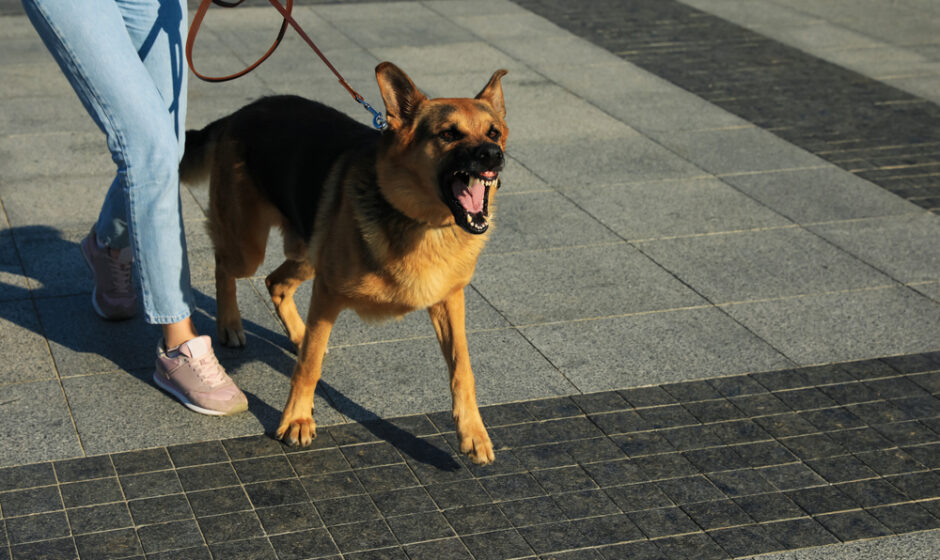Lone workers face unique challenges, and one of the most concerning is the risk of dog bites. Whether you’re a delivery person, utility worker, or real estate agent, encountering dogs can be unpredictable and potentially dangerous. This article aims to provide practical tips and strategies for lone worker dog bite prevention ensuring you stay safe and confident while working alone.
Understanding the Risk
Lone workers often enter unfamiliar properties or outdoor areas where dogs may be present. The unpredictability of these encounters makes it crucial to understand the risks involved. By recognizing the signs and preparing accordingly, you can significantly reduce the likelihood of a dog bite.
Why Dogs Bite?
Dogs bite for various reasons, including fear, territorial behavior, pain, or protecting their owner. Understanding these triggers can help you anticipate and avoid situations where a dog might feel threatened.
Recognizing Aggressive Behavior
Knowing the signs of aggressive behavior in dogs is vital. Look for growling, bared teeth, stiff body posture, and intense staring. These indicators can signal that a dog is ready to bite. Being aware of these signs can give you the time to retreat safely.
Preparing for Encounters
Preparation is key to preventing dog bites. Before entering a property, make noise to alert any dogs of your presence. Carry items such as a whistle or a stick to help deter aggressive dogs. Always have a clear escape route in mind in case you need to retreat quickly.
Safe Interaction Techniques
When interacting with dogs, maintain a calm and confident demeanor. Avoid direct eye contact, as this can be perceived as a threat. Allow the dog to approach you and sniff your hand before attempting to pet it. Always move slowly and avoid sudden movements that could startle the dog.
Use of Protective Gear
Wearing protective gear can provide an additional layer of safety. Consider wearing long sleeves, gloves, and sturdy boots. In some cases, carrying a dog deterrent spray may be advisable, but only use it as a last resort.
Emergency Response Plan
Having an emergency response plan is essential. Know the location of the nearest medical facility and have a first aid kit readily available. If bitten, wash the wound immediately with soap and water and seek medical attention.
Training and Education
Training and education are crucial components of dog bite prevention. Attend workshops or courses on handling dogs and learn about their behavior. Being educated on the topic will give you the confidence and skills needed to handle potential encounters effectively.
Legal Implications
Understanding the legal implications of dog bites is important. Familiarize yourself with local laws and regulations regarding dog bites and the responsibilities of dog owners. This knowledge can be useful if you need to report an incident.
Implementing Company Policies
Companies employing lone workers should implement comprehensive policies to address dog bite prevention. This includes providing training, ensuring workers have the necessary protective gear, and establishing clear procedures for reporting incidents.
Technology and Gadgets
Technology can play a significant role in enhancing safety. GPS trackers, panic buttons, and mobile apps designed for lone workers can provide real-time assistance and monitoring. These tools can be invaluable in emergency situations.
Reporting Incidents
Reporting incidents is crucial for improving safety protocols. Document any encounters with aggressive dogs and report them to your employer. This information can help in developing better prevention strategies and ensuring the safety of all lone workers.
Building Confidence
Confidence is key when dealing with dogs. The more knowledgeable and prepared you are, the more confident you’ll feel. This confidence can reduce your chances of being bitten, as dogs are more likely to respond positively to calm and assertive behavior.
Conclusion
Preventing dog bites for lone workers requires a combination of awareness, preparation, and education. By understanding dog behavior, recognizing the signs of aggression, and implementing safety measures, lone workers can significantly reduce their risk. Stay vigilant, be prepared, and always prioritize your safety.




